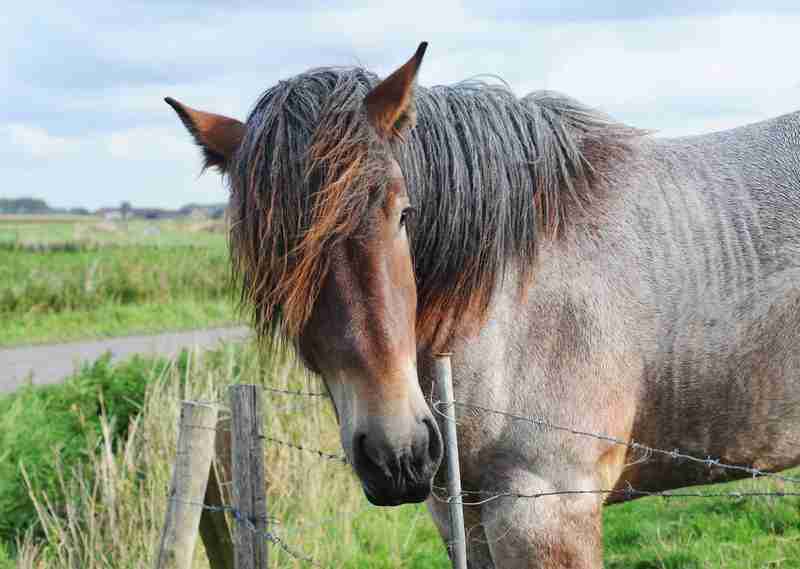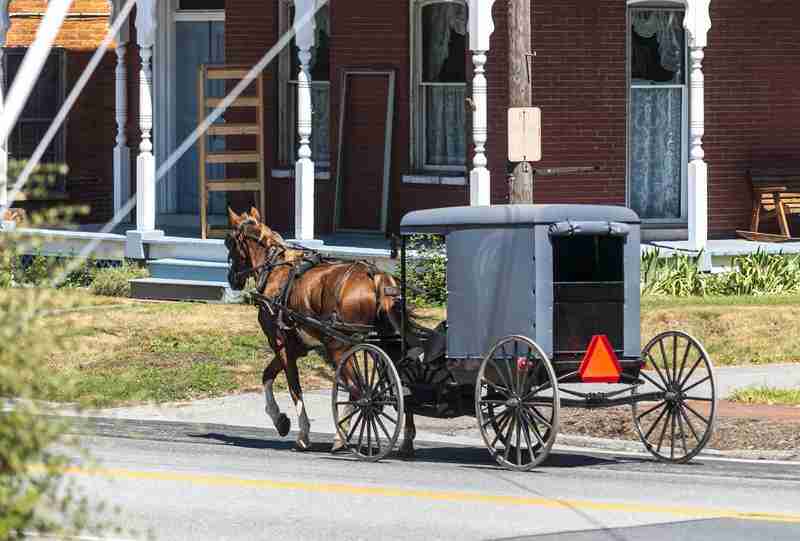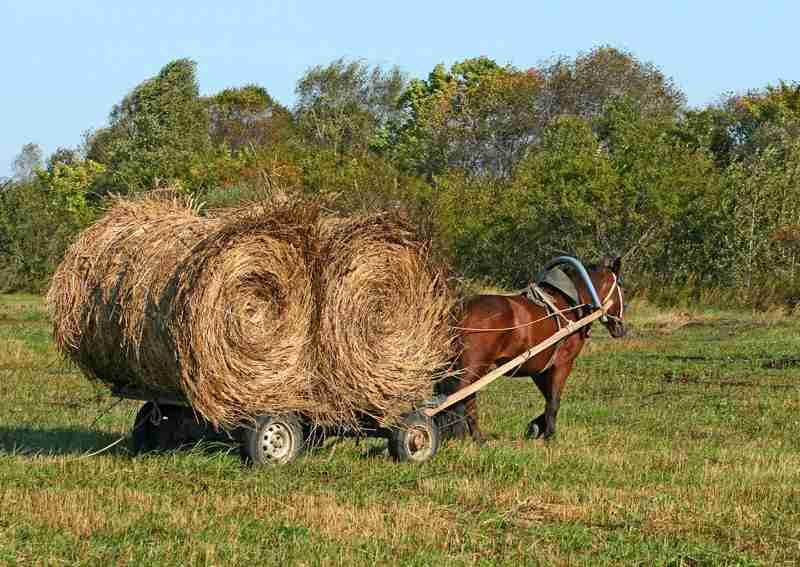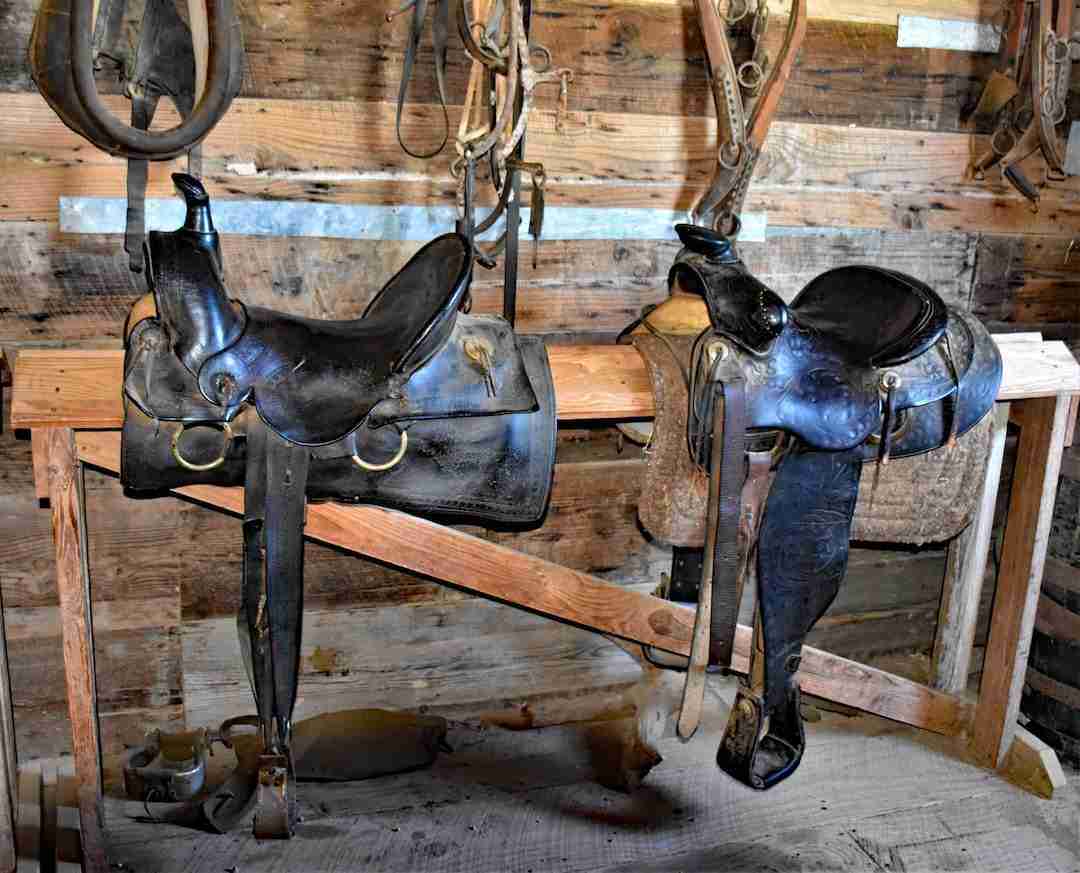A horse is a strong animal and beautifully proportioned to make light work of heavy work. The strength of a horse depends on its breed, shape, fitness level, and weight. Draft horses are typically your strongest type of horse, as they are the biggest horse breeds. How strong is a horse?
Horses are adept at pulling thousands of pounds on wheels and can carry hundreds of pounds on their backs. In need, horses can pull up to 15 times their weight over a short distance. A strong horse has a bite force of 500 psi, a kick measuring 2,000 psi, and is capable of generating 14.9 hp.
Horses, especially draft breeds, have built a reliable reputation of strength over the centuries. Many of the strongest horse breeds started as war horses before transitioning to farm animals capable of impressive feats of strength. Today you can experience a horse’s strength when you visit a draft-horse pulling contest.
How Strong Is A Horse?
Generally speaking, a horse can carry between 300-400 pounds of weight on its back (20% of its body weight), kick at a force of 2,000 psi, bite 2 and ½ times as hard as a human, pull 1/10th of its weight in deadweight, and pull 1 and a ½ times its weight on a cart for long distances.
Horses are some of the most spirited and majestic animals on planet earth, and when healthy, their strength is something to marvel at. A horse’s strength is largely dependent on the following criteria:
- Horse Breed
- Weight
- Shape
- Fitness
Measuring The Strength Of A Horse
You might wonder, how exactly do you measure the strength of a horse? Is there a machine you put the horse on which calculates its strength before kicking out a number in horsepower (hp)? The answer is no. We measure the strength of a horse in the following ways:
How Much Weight A Horse Can Pull
Horses have been pulling more than their weight for centuries, comfortably pulling 1 ½ time their body weight when the load is placed on a cart or wagon with wheels for long distances. When you take the wheels away, a horse can pull 1/10 of its weight in deadweight, like an unwheeled plow, for example, comfortably completing 8 hours shifts per day.
Suppose you own a 2,000-pound draft horse and wonder how much weight it should be able to pull. This horse should have no problems hauling a 200-pound plow or 3,000 pounds placed on a cart with wheels. Rough terrain will impact the horse’s ability to pull heavy loads, and it’s vital not to overload your horse when navigating difficult terrain.
A horse should be capable of pulling up to 15 times its weight placed on wheels, over short distances, depending on the breed – draft horses being your strongest type of horse.
The Biteforce Of A Horse
It’s said that 2% of all emergency admissions are due to an animal bite, and the majority of these bites are inflicted by dogs, then cats, followed by humans, donkeys, and then a horse. You have a higher mathematical chance of being bitten by a fellow human being than a horse, which shows that horses rarely bite to damage.
However, when a horse bites with intent, you will know about it, as horses have a bite force of close to 500 psi, which is 2 ½ times that of a human or 2 x stronger than a Pitbull. When a horse decides to bite using all of its strength, and your hand is the target, expect to lose a finger or two in the process.

How Much Weight A Horse Can Carry
Depending on the horse breed, activity level, and weight, they can typically carry between 300-400 pounds on their back, with some bigger draft horses easily managing up to 500 pounds. Many horse experts claim that the safest limit is 250 pounds, no matter the size of the horse.
A healthy horse can safely support and transport 20% of its body weight. Suppose you own a 2,000-pound draft horse; it should be able to carry a person weighing 400 pounds without a struggle. It would be safest if you didn’t assume that any horse can carry the above theoretical load.
If a horse struggles with an underlying health issue or isn’t fit and healthy, loading them too heavily can result in loss of muscle function, arthritis, or pinching of nerves in the short and long term. By keeping a close eye on the horse’s health, you will be able to determine if the horse is carrying too much weight according to its weight and fitness level so as not to over-work the horse.
A Horse’s Kick
Have you seen some of the videos on social media where a horse kicks an unsuspecting human, struggling to contain your laughter after watching it? A kicking horse may be funny while viewing it from the safety of your phone screen, but not as much when you see or experience it in real life.
A horse’s kick is strong enough to kill whatever it’s kicking. A horse’s kicking force can reach 2,000 psi while reaching speeds up to 200 miles per hour. Luckily, horses don’t spend their lives searching for unsuspecting humans to kick, a horse will not kick unless pushed to do so, and many horse kicks are accidental (ask any equestrian.)
Being kicked by a horse feels like being hit by a car and is extremely powerful and dangerous. The annual death rate due to horse kicks is below 30, which is low, but still indicates the deadly power of a horse’s kick.
Click here and get some sound advice on how to avoid getting kicked by a horse.
How Much Horsepower Does A Horse Have?
When hearing the term horsepower, many of us immediately think that one horse is equal to 1 horsepower, which isn’t correct. A single horse can put out a maximum output of 14.9 horsepower.
“Horsepower” is a form of measurement commonly used to describe the power of motors or engines. As a single unit, horsepower equals 33,000 foot-pounds of work per minute or 550 foot-pounds per second, measuring 745.7 watts.
During the 18th century, Scottish engineer James Watt invented the horsepower measurement. In order to compare the power of draft horses to steam engines, Watt used his horsepower measurement to convey that improving the designs of steam engines resulted in them being more fuel-efficient.
Watt concluded that a horse was able to turn a 24-foot mill wheel around 2.5 times every minute while performing its daily duties. He further calculated that the degree of force and energy needed to be applied by the horse equated to 33,000 foot-pounds every minute. Watt did his calculations while observing draft horses.
Next time you hear the term horsepower, remember that 1 horse can generate 14.9 hp.
What Are The Strongest Horse Breeds?
Some horse breeds are bred to be as powerful as possible. You won’t find the strongest horse breeds on the racing track; you will rather spot them on a farm, pulling incredible amounts of weight. Draft horses are the strongest horse breeds found worldwide today and are fittingly referred to as workhorses.
Horses have evolved to include strength in their makeup. Thick muscles, a huge heart, and powerful lungs all play an integral part in the power that a horse can generate. Over the centuries, people brought the biggest and strongest horses together to mate, resulting in the strong draft horses we have today.

Belgium Draft
First used as warhorses, before being developed in Brabant (Belgium) because of their powerful backs, then transitioned to the farm. The Belgium Draft stands between 16-18 hands, weighs about 2,000 pounds, and holds the record as the strongest horse breed in the world due to breaking all pulling records.

The Belgium Draft is the most popular draft breed in the USA and can comfortably pull up to 8,000 pounds on wheels for long distances.
Shire Of England
King Henry VIII used them as warhorses, and this breed of horse is believed to be descendants of the “The Great Horse,” a breed of horse employed by the knights of old. Today, Shires can be found on farms, fields, and horse shows featuring dressage.

The Shire stands 16-18 hands tall, weighs between 2,000-2,400 pounds, and their muscular bodies have delivered many a cart-pulling champion. The world record for the most weight pulled by a horse is held by a Shire horse, who pulled an astonishing 58,000 pounds in 1924.
Other Articles You Maybe Interested In
What Are Ergots And Chestnuts On Horses?
What Is A Grulla Quarter Horse?
Who Is The Boss Mare And What She Means To The Herd
Why Do Horses Nod Their Heads: 13 Factual Reasons
What Is The Lifespan Of A Horse?
Ardennes
The Belgian Ardennes were once the warhorses of Napoleon and Ancient Rome and are the oldest remaining draft breed. Not the biggest draft breed, standing at 15-16 hands only; these compact broad-bodied horses are very powerful and weigh up to 2,200 pounds of pure muscle. Ardennes possess pulling power and stamina that not many horse breeds can match.
Dutch Draft
Imported from Holland, the Dutch Draft was bred to pull a plow, especially through heavy clay terrain. They stand 15-17 hands tall, weighs 1,800 pounds, and their short, muscular legs have tremendous pulling power. These friendly giants have a calm temperament, making Dutch Drafts a favorite among equestrians.
Percherons
French Percherons started as warhorses before becoming famous for being able to plow fields without becoming fatigued. The trainable Percheron weighs between 1,800-2,600 pounds and is one of the heaviest draft breeds.
Percherons can pull virtually anything from wagons to carriages and is an excellent riding horse as it has great long-distance stamina. Percherons have calm natures and are often used in parades and sleigh rides.
American Cream Draft
The American Cream Draft’s lineage started in Iowa during the early 1900s and is the only US-developed draft horse alive. The American Cream is a mid-range draft standing 15-16 hands tall, weighing an impressive 2,000 pounds, and was bred to pull farming equipment through unforgiving soil during all seasons.

Suffolk
The Suffolk, as its name suggests, hails from the Suffolk region in England, where it was developed to be a hard-working farm animal. Historically, the Suffolk was known as the “Suffolk Punch” or “Suffolk Sorrel.” “Punch” is an old English word referring to a “short, stout person.”
The Suffolk stands 16-17 hands tall, weighing up to a massive 2,200 pounds, and is rated as one of the strongest horses in the world. They require less feed than other horses, making them less expensive to raise, and live long lives.

Friesian
Originating in Friesland, Netherlands, the Friesian horse was first employed as a war horse throughout the Middle Ages, as their size allowed them to carry knights in heavy armor. The modern Friesian stands 14.5-17 hands tall and weighs between 1,200-1,450 pounds. Some people call them “Belgium Black” due to their typical solid black coats.
The breed faced extinction a couple of times, but luckily this did not happen, and today their numbers are growing in popularity. In recent times the Friesian breed has entered the dressage space. Friesians may not be as massive as some draft horses from America, Belgium, or France, but their smaller frames are a force to be reckoned with.
South German Coldblood
“Süddeutsches Kaltblut,” or South German Coldblood is Germany’s main draft horse breed. Smaller than your average draft horse, the South German Coldblood stands 16-17 hands tall and weighs 1,500 pounds. Don’t be fooled by their smaller size; a lot of power is packed in its frame.
The South German Coldblood can do farm work, but pulling carriages and carts is where you will find them. This breed of draft horse is also known for its distinctive leopard or tiger-spotted coat, which some display.
Conclusion
The strength of a horse is something to marvel at. When someone states something is as “strong as a horse,” it should refer to something extremely powerful, as horses are some of the most powerful animals found on earth. We are blessed to be able to share life with these majestical, good-natured, strong animals.









